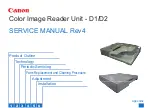
© Sealevel Systems, Inc.
- 10 -
ULTRA 530.LPCI User Manual
Linux Installation
Note:
You MUST have "root" privileges to install the software and drivers.
1. Login as "root".
2. Mount the CDROM by typing:
mount -t iso4860 /dev/hdc /cdrom
Note:
Your cdrom may not be /dev/hdc it could be /dev/hda, /dev/hdb, /dev/hdd, or
if you have a SCSI drive /dev/sda, /dev/sdb, /dev/sdc, etc. You may mount the
CDROM to any location, the /cdrom is just a common example.
3. Next change to the directory where you mounted the CDROM:
Ex. cd /cdrom/software/SeaIO/Other/linux
Note:
The syntax is case sensitive.
4. Copy seaio .tar.gz to your home directory by typing:
cp seaio .tar.gz ~
5. Change to your home directory by typing:
cd
6. Unmount the drive and then Unzip and Untar the drivers and software by
typing:
umount /cdrom
tar -xvzf seaio .tar.gz
7. Change to the SeaIO directory by typing:
cd SeaIO
8. Now compile and prepare the drivers for use:
make install
9. With the system off and unplugged, install your SeaIO PCI card.
10. Plug system back in and boot Linux.
Login as "root".
11. Load the driver by typing:
SeaIO -load
The driver has enabled the card and is ready to use, and you now have the option to
run a test utility on it. Skip to section "Using the test software" if you wish to do so
at this time.
To set up Linux to automatically load the driver; refer to a Linux manual concerning
your specific distribution for help.









































